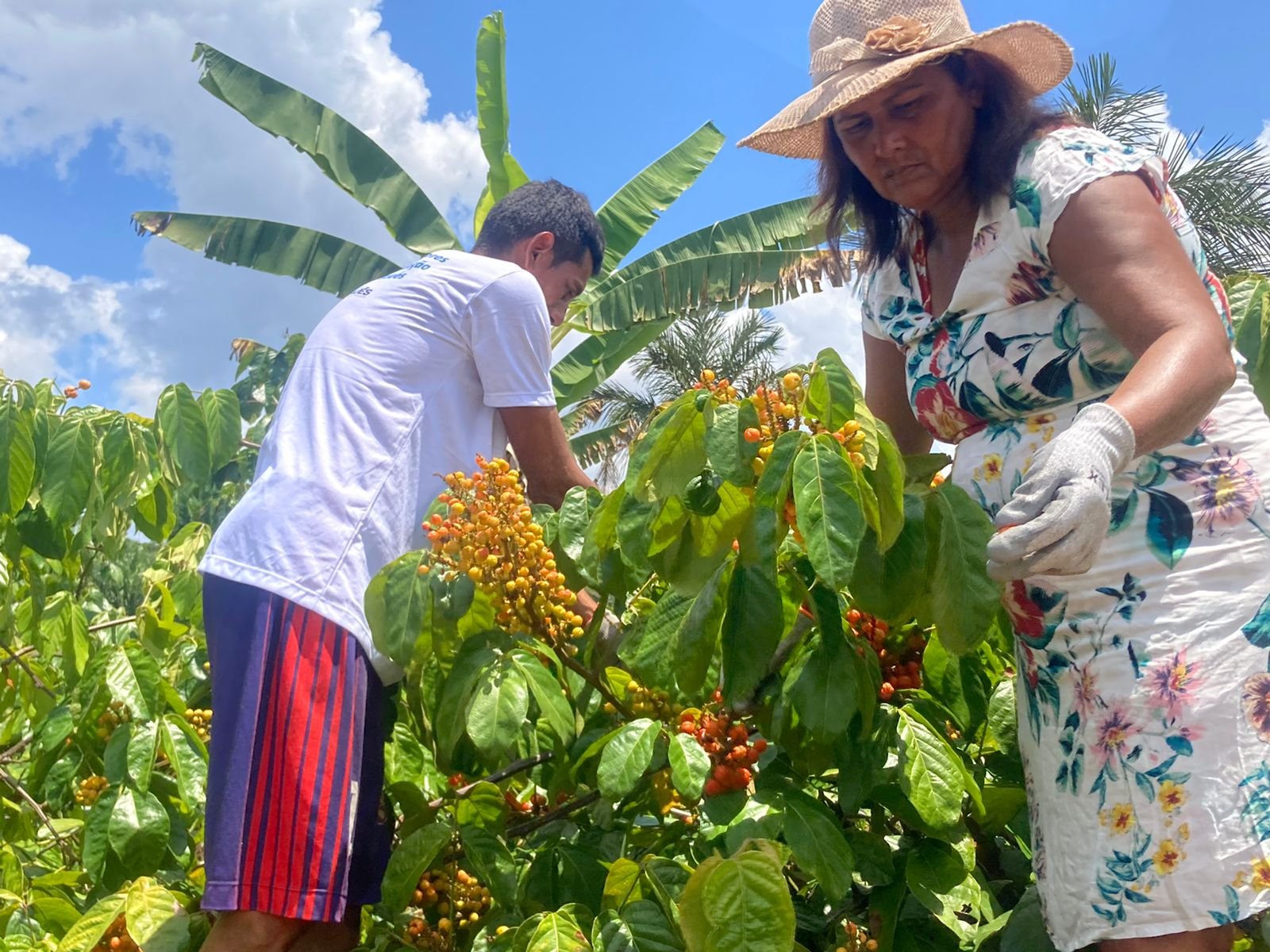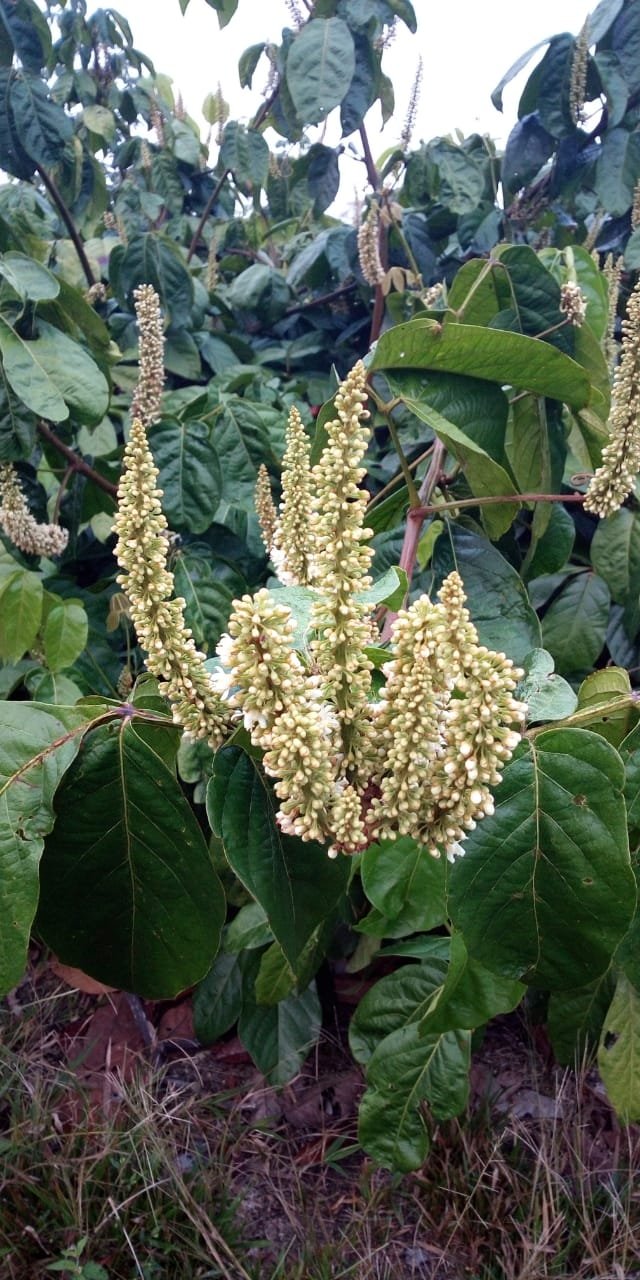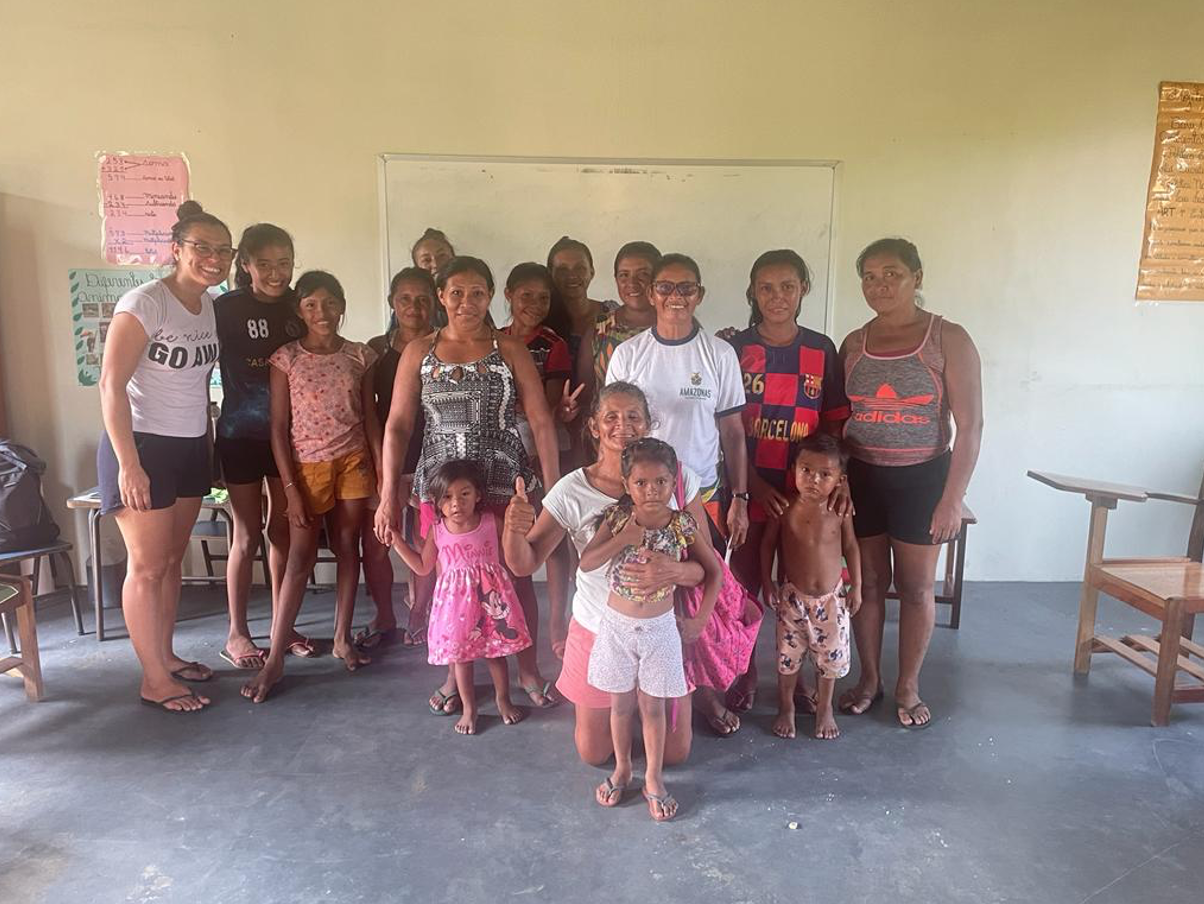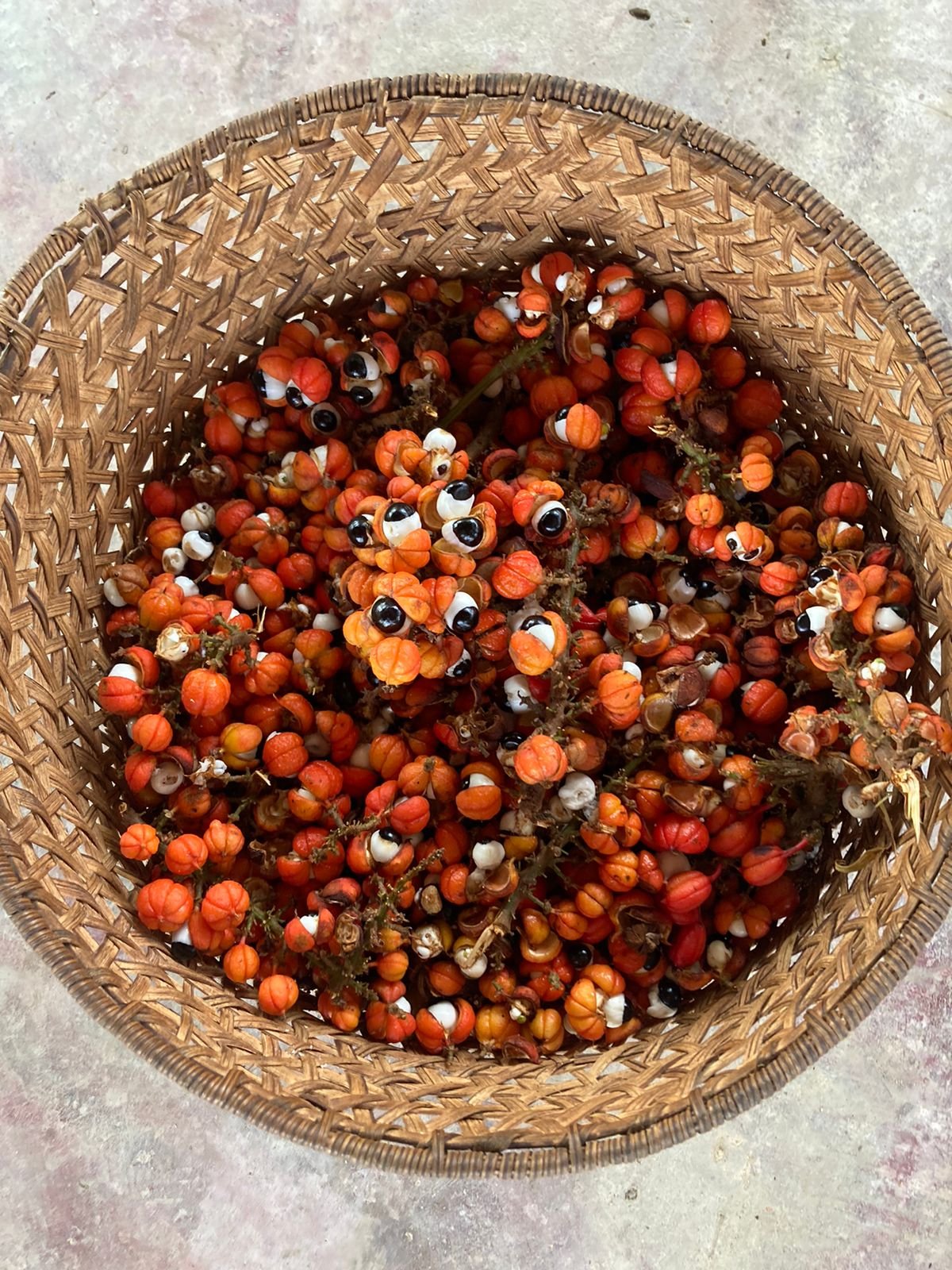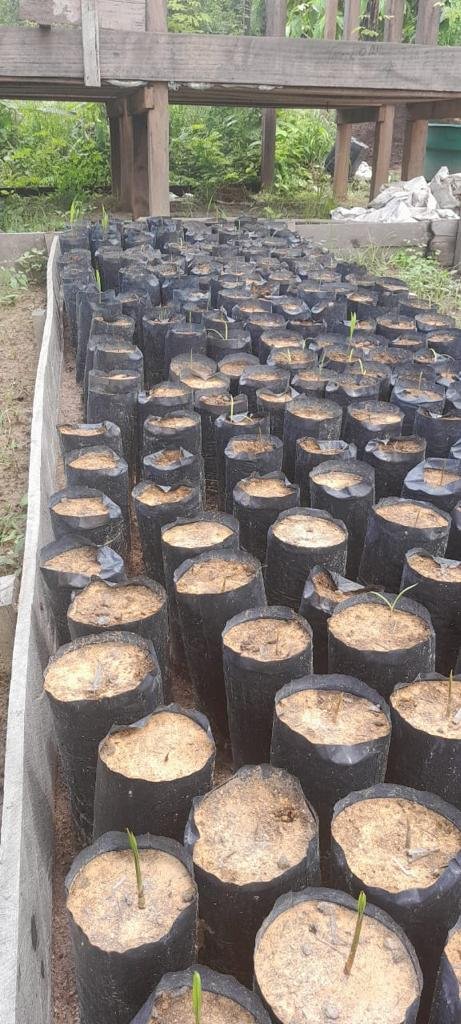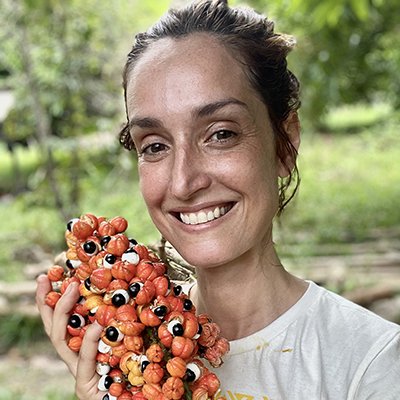The Agroforestry Systems and it's Joint Actions (part I)
This first installment of a two-part article, shared with us by our partner Instituto Piagaçu, offers a rare opportunity to listen to the insights from contributors to the project “Development of Agroforestry Systems Maués-Amazonas”.
—Regenerosity
Part I: First Practical Actions for the Development of Agroforestry Systems
Preface
This article was built with the presentations and contributions of Luana Baraúna, Karen Costa, Eric Brosler and Ramom Morato from the field team of the project “Development of Agroforestry Systems Maués-Amazonas” that is taking place in the traditional community of São José do Rio Paricá in Maués- Amazonas. They tell a little about what goes on there, along with an interview with guest and partner Dr. Iraíldes Caldas, whose research “Community Potentials for Acquiring Solar Energy in the Scope of Social Practices of Women in the Forest: diagnosis and inventory” is intertwined to the eco-feminist activities of the project to develop agroforestry systems, in the community of São José do Rio Paricá.
Also participating is Thalita Rody from the ANA Women's WG (National Agroecology Articulation). We continue with the support of SEBRAE, through the Piagaçu Institute, with the participation of FAPEAM research with a doctor from UFAM, teachers from IFAM- Maués, and support through ANA (National Articulation of Agroecology) and the Center for Alternative Technologies of the Zona da Mata (CTA-ZM). Partnerships tend to expand in the agroecological journey. The creation of an agroecological network happens naturally because agroecological thinking is connected to a whole chain of thought, interconnected with life in all sectors.
Photos: Luana and women of three generations of the matriarch dona Amélia (left), basket of guaraná fruit (right).
Contributors
LUANA BARAÚNA Born in Maués, or as they say, is a daughter of Maués. Technical Consultant, she works to strengthen the ASCAMPA women's group and coordinates the implementation of Agroforestry Systems in the production of seedlings and in supporting activities. “I've always wanted to work on something aimed at the forest, because it's where the raw material to produce everything around us comes from, in addition to containing the greatest biodiversity on the planet, with its rich fauna and flora and full of charm and magic. I observe that our forests need to be conserved by humanity, giving voice and opportunity to the forests peoples. So I feel glad to be invited to be part of this great movement.”
ERIC BROSLER is a forestry engineer, agroforestry system coordinator, responsible for plantings and the ASCAMPA certification process. “We have been working for some time with Agroforestry Systems here in the region of the Urupadí river, in the community of Paricá, Santa Clara, there are several communities involved. We always work on all aspects of agroforestry, such as the issue of education, we educate and build together with young children and women.”
THALITA RODY is the coordinator of the Observatory of Agroecological Booklets at the Center for Alternative Technologies in the Zona da Mata (CTA-ZM) Born in Espírito Santo, residing in Viçosa, Minas Gerais, she supported the Piagaçu Institute with social technology training in the Agroecological Booklet. “... the transformation in the lives of women who take notes, form groups, remain united, happens at different levels in different ways””
RAMOM MORATO is an agronomist, coordinator for the Amazon state of the Instituto Brasil Orgânico, coordinator of the Maués-Amazon Agroforestry Systems Development project. “I currently work as a service provider for ASCAMPA, with the aim of becoming a reference in agroecology, in regenerative production. And more than that, I wish we can be a reference of the Amazon that we believe in. With the protagonism of traditional peoples, defending their territory, defending their culture, free and with the power of choice to defend and decide their destiny.”
IRAÍLDES CALDAS Invited to enlighten us on eco-feminist concepts, we exchanged many experiences with Dr. Iraíldes Caldas, and shared with her the objective of sustainable development in communities of indigenous and traditional peoples. She is teacher at UFAM with recognized work in the areas of Sociology, Anthropology, Indigenous Ethnology and Social Work. The research “Community Potentialities for the Acquisition of Solar Energy in the Scope of the Social Practices of the Women of the Forest: diagnosis and inventory”, is intertwined with our work of “Development of Agroforestry Systems Maués-Amazonas”, where both teams end up meeting to act partnering in the community. In addition to being the dear “a daughter of Maués”, she is the director of the Institute of Philosophy, Human and Social Sciences at UFAM, where she works mainly on gender issues, symbolic manifestations, indigenous women, movements and social practices of forest women. She is ahead of the aforementioned research that takes place in 5 other Amazonian communities.
KAREN COSTA Was born in Parintins and works as a Food Technologist. She graduated from the University of the State of Amazonas. “It is an exchange of knowledge, with what I learned at the University taking to the community and the community teaching the values that come from generation to generation, in an empirical way. Proud to be a part of it, to be able to help and see how much these women are capable of overcoming the adversities of life.”
Introduction
There is a cycle of transformations occurring around Maués guarana, in São José do Rio Paricá Community, which is home of ASCAMPA farmers' Association. The construction of the nursery was completed, and management is now taking place. The harvest of the November crop also concluded its cycle, and now, the project continues to develop practices based on agro ecological concepts in the territory, with the aim of leaving, as a result, the community and especially the women, with open paths for generating income through the creation of a new agroecological product, designed and managed by them. The work with agroforestry involves many sectors, and in this project we have been working on research, education, carbon capture, eco feminism, and the entrepreneurial construction of an agroecological product for another source of income for women in the guarana production chain.
FIRST PRACTICAL ACTIONS FOR THE DEVELOPMENT OF AGROFORESTRY SYSTEMS
LUANA: The Maués-Amazon Agroforestry Systems Development project mainly aims to insert agroforestry systems in the Guarana forests with ASCAMPA farmers, however, it also seeks to strengthen the group of women who participate with their companions in the association, through the Conversation Circles, to together we seek solutions to the most varied conflicts, in addition to strengthening this group by showing the importance that each one has. We seek to insert the Agroecological Booklet so that each farmer observes the value of her work, writing down each production, so that this woman has a concrete way that she is also part of the family income.
RAMOM: We made a nursery in an area chosen to be an ASCAMPA school. This area was chosen because it is an ASCAMPA school. So that they can disseminate social technologies and knowledge about regenerative production, agroforestry, and other technologies that are of interest to the community.
LUANA: I help with the coordination and implementation of agroforestry systems, recomposing the forest landscape of the Guarana forests, with the production of seedlings of forest species, I support the activities developed by the Piagaçu Institute, mainly with the women's group of the ASCAMPA association, developing the union, strengthening and empowerment of rural women.
RAMOM: We buy a lot of seeds. A part of these seeds will be used for direct planting and the other part is for the formation of new seedlings. The seedlings that we chose are seedlings that can bring benefits both to the Guarana plantation and to the recovery of the areas, as well as financial benefits over time.
LUANA: This project is bringing income, valuation and seedling production techniques and agroforestry systems to its members, showing that it is possible to develop methodologies previously unknown to farmers. In addition to strengthening the group of women participating in this project, showing the strength of women farmers.
THE IMPORTANCE OF CHOSEN SPECIES FOR THE NURSERY
RAMOM: These are species that can provide wood, which also provide seeds, and food. We are going to plant a lot of açaí. These chosen species are intended to improve the production of guaranazal, recover the fertility of the land, bring sanity, health to the environment.
LUANA: The nursery is where the seedlings that will be inserted in the associated farmers' guarana groves are produced. It results in greater diversity, selection of genetic material, evaluation and phytosanitary quality of the seedlings. Seedlings in the nursery are already starting to grow.
RAMOM: We chose pink, purple and yellow Ipês, used frequently in civil construction and other things. Itaúbarana, a very resistant, very used to build boats. They are very valuable woods. We also chose cumarú to work with seeds that bring other economic possibilities to ASCAMPA. Mainly that it brings the inclusion of young people, women and the elderly.
DAILY WORK WITH THE NURSERY
RAMOM: The work of the nursery is very challenging. It requires daily care for the seedlings. No wonder in English language is called “nursery”, because it is in fact a nursing job, taking care of the little babies there. It requires a lot of preparation and knowledge from those who are dealing with it: how to germinate each species, how to handle them so that they reach the right size and for the right time for each planting. Two people from family agriculture work in the nursery. Jaraki and Luciano, who is his son. Both have experience working as woodsman in the forest, have experience in sustainable production, worked at the Amazon museum. Both have extensive experience in sustainability with a looking at the forest in an inclusive and sustainable way. It is these people who work. Who build the best nursery, and who carry out the seedling production activities. Working with seeds is a little different. We are going to do direct planting of some seeds and we are going to test models of plants with a lot of seeds together, because we believe that the seeds help each other, the roots help each other. We use this technology known as “seed mixture”. We already had experience with this technique and it proved to be very interesting in order to have a lot of diversity, with a forest succession that is also very interesting.
LUANA: The construction of the nursery for the development of this project starts with the interest of the farmers, for defining the property for implantation. After these definitions, start looking for an area that is flat and has sunlight during the day, then cleaning the chosen area, installing the structure of the nursery and shade, building the benches, producing compost, acquiring seeds and finally the production of seedlings. It was necessary to install an artesian well during the development of this project, helping to distribute water for the demand for seedling production, and the boat that helps with logistics such as transporting farmers, technicians and association actions. There was also the delivery of Agroecological Booklets with the support of the ANA Women's Working Group (National Articulation of Agroecology) and the Center for Alternative Technologies of the Zona da Mata (CTA-ZM) in partnership with the Women's Movement of the Zona da Mata and East de Minas, as a political-pedagogical instrument so that women can observe how much they produce and how much they already help in the family income. This work took place alongside that of Dr. Iraíldes, who seeks to empower women to receive solar energy in the community.
WORKING WITH SEEDS
RAMOM: The seed front can be very inclusive, as it generates savings for those people who do not work in Guaraná, and also for those who want to have another income alternative. The work with seeds goes beyond just collecting, there is a whole teaching program for collectors, including tree climbing classes. The result contributes a lot to the conservation of the Amazon and its species. They are species that present a good growth, fast, rusticity and high survival. We always expect the survival of what we plant to be 90%, that is, the loss must be less than 10% for successful planting. 15% is considered a good seedling and seed set. The work with species that can provide seeds, such as the Ipê and the other trees that we are planting, also has the intention of opening a new market for the recovery of degraded areas, for reforestation, which we hope will become more and more common. for the Amazon: a forest economy based on seeds.
CARBON STOCKS AND THE AMAZON ECONOMY
RAMOM: Ipês, Itaubarana and Cumaru are species with high carbon aggregation. It has proven to have a very satisfactory aggregation of carbon for what we aim for in this project, which is the recovery of carbon parallel to the planting of SAF's. The carbon part is already thought of from now on. We are understanding the number of trees that will be planted, based on previous experiences that we have, such as with the Carbon Neutral Program by IDESAM. We already know a little about the dynamics of species, and a little about the amount of carbon that a certain number of species will add to the areas where they are implanted.
They are species at high risk of extinction. Highly sought after, valuable to the timber industry. Species that provide wood for civil construction and other uses such as wood for boat building, species that are being suppressed to be illegally harvested.
It is important that we have a truly Amazonian economy in the Amazon. As is the case with seeds, and as with guarana. This generation of income in a fair and inclusive manner will ensure that the forest is conserved, and that the culture of the place will move forward. One of the reasons for choosing these species is because they are species that make sense both for use by the community and for the ecological recovery of the place. Guarana occupies its ecological space together with these other species that accompany it, and so we have a more fertile soil, we have food production, we have wood production, we have seed production.
REFERENCE LINKS
Brasil de Fato (Agroecological booklet)
Part II: How do ASCAMPA Women Contribute to the Sustainable Development of their Communities? will be published next week Thursday 23rd March, 2023.
Text organized by:
LIVIA PRESTES Activist in Maués in the state of Amazonas since 2019. Social communicator, fundraiser for culture and sustainable development projects that operate in the Amazon Agroecology Network Maniva. She is also a scenic artist, producer and cultural agent. “The training we had at the ANA (National Articulation of Agroecology) was fundamental for us to understand how to apply the available social technologies. However, for each territory, they happen in their own particular way for each group. The Amazonian communities have a tradition of collective organization, so the group develops very quickly, they take advantage of it a lot! It is a joy to see how things are happening, people and opportunities arising, institutions getting closer, creating a network. It's very rewarding to be on projects like this, you work a lot, and you learn a lot more.The future is feminine and Amazonian”.

